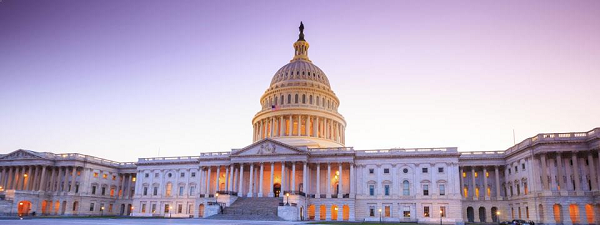On May 11, 2023, at 11:59 PM EDT, the COVID emergency order is expected to end (barring last-minute litigation efforts), and with it Title 42. Title 42 was issued under the Centers for Disease Control’s (CDC)’s public health authority, which was never intended to be used as a border management tool. Yet both the Trump and Biden administrations relied on it for border management, effectively ending the ability to seek asylum at the Southern border for many. In advance of Title 42’s end, the Biden administration is sending active troops to the border and setting up a series of programs, regulations, and policies that will ramp up the use of expedited removal (ER).
The new structures being set up to replace Title 42 are decidedly a mixed bag, with some problematic features in common. Expanding lawful ways to come to the United States through parole programs, increasing refugee numbers, and opening regional processing centers are practical steps the administration should take to address shifting regional migration patterns in light of continued Congressional inaction. However, these policies are paired with troubling programs that narrow access to asylum at the Southern border, increase reliance on detention, and create barriers to legal representation.
Implementation of the Circumvention of Lawful Pathways Rule
Any day now, we expect the Biden administration to release the final version of their asylum transit ban rule. This rule creates a “rebuttable presumption” that a person who arrives at the southern border is ineligible for asylum unless: they are an unaccompanied minor; the individual is granted parole prior to arrival, presented themselves at a Port of Entry (POE) through a pre-scheduled time and place using the often unworkable CBP One app, or sought asylum or other protection in a country they traveled through and received a final denial.
Despite the ongoing problems with the CBP One app, the transit ban rule relies heavily on it and continues to incentivize its use in policy decisions in preparation for May 11th. From stakeholder calls, DHS plans to expand the available number of daily appointments to 1,000 after May 11th. While DHS reserves the right to detain certain individuals who schedule appointments using CBP One if they pose a security risk, the administration is messaging that individuals who seek asylum using CBP One will be processed outside of ER, given Notices to Appear, and paroled into the United States for periods of time sufficient to receive work authorization. Individuals who present at the Southern border without a CBP One appointment will be processed after those with appointments and are expected to be subject to the proposed rule’s rebuttable presumption of ineligibility for asylum.
This proposed rule, if implemented, violates international and domestic asylum laws and will exacerbate the disparity in success rates for asylum seekers with access to counsel and those who do not. Navigating the series of exceptions to “rebut” the presumption and access asylum will be extraordinarily difficult for pro se asylum seekers. It’s not enough to be able to apply for asylum at our southern border – there must be meaningful access to asylum to protect due process.
What we’re expecting:
- Continued issues with the CBP One application.
- Confusion around how the Circumvention of Lawful Pathways applies to individuals who present without CBP One appointments, such as those with medical emergencies.
- Long lines and capacity issues at POEs.
- Narrowed access to asylum at the Southern border for those without CBP One appointments.
- Limited USCIS capacity to address existing backlogs, particularly in the asylum backlog, as resources are committed to the Southern border.
Returning to Title 8
With the end of Title 42, border management returns to the immigration statute known as “Title 8.” Currently, Mexico has agreed to accept 30,000 removed migrants per month of individuals from specific countries under Title 42. However, DHS has repeatedly signaled that the agency is attempting to negotiate the removal under Title 8 of some non-Mexican nationals to Mexico. On Tuesday, May 2, 2023, the Mexican government signaled that they will continue to accept migrants after the end of Title 42. Their announcement was not specific about which nationalities Mexico will accept.
What we’re expecting
- Mexico to continue to accept Hondurans, Guatemalans, Salvadorans, Cubans, Nicaraguans, Haitians, and Venezuelans.
Returning to Credible Fear Interviews While in CBP Custody
U.S. Citizenship Immigration Services (USCIS) asylum officers began quietly administering credible fear interviews (CFI) and reasonable fear interviews (RFI) while asylum seekers are in U.S. Customs and Border Protection facilities (CBP) on April 12, 2023. In addition to the volumes of evidence demonstrating the substandard conditions in CBP facilities, these facilities were never designed to hold individuals for long periods of time or populations experiencing vulnerabilities.
A subsequent stakeholder call clarified the new program, which is currently limited to single Spanish-speaking adults from countries to which the United States has regular flights and who are encountered between ports of entry will be held in a short-term CBP facility. CFI and RFI interviews will be conducted by USCIS asylum officers, not CBP employees.
If this sounds familiar, it is because the Trump administration ran a very similar program known as Prompt Asylum Claim Review (PACR) and the Humanitarian Asylum Review Process (HARP). Attorney access under the Biden administration’s program is limited to telephone only. In order to access counsel, the asylum seeker in this program will need to either know who to call ahead of time or take advantage of already limited pro bono programs that primarily provide only legal orientation programs. At the end of this process, asylum seekers are expected to tell their most traumatic life stories in a phone booth with limited to nonexistent access to counsel.
What we’re expecting
- Limited access to counsel for the CFI, including attorneys and pro bono organizations experiencing difficulty accessing individuals in CBP custody.
- Longer than currently planned for times in CBP custody.
More Harmful ICE Detention & Expansion of Intensive Supervision Appearance Program (ISAP)
Even with efforts to determine credible fear as quickly as possible, there will still be individuals who are found to have a credible fear of return. If current procedures are followed, many of those will be transferred to ICE custody. Others not detained by CBP will be going through the credible fear process in ICE detention. While ICE has the authority to release individuals who are found to have a credible fear of return, they are not required to do so. Given this context, we can expect two things on the detention front.
First, we know that ICE is expecting CDC to issue new guidance on holding people in congregate settings. At a recent congressional hearing, Acting ICE Director Tae Johnson testified that ICE is using about 73% of its detention capacity as a result of current guidelines (ICE has a detention capacity of 34,000 people daily). If and when those guidelines are changed, it appears that ICE will move to use its full detention capacity. Secondly, with more detention, we can expect to see the related harms, both mental and physical, that are experienced by people in detention because ICE’s facilities have a long track record as hotbeds of detention standard violations, abuse, and medical neglect.
While at present, nothing indicates a return to family detention, it is unlikely that families will not be released on their own recognizance. Supervision and electronic monitoring along with conditions, like curfews, appear to be the policies this Administration intends to use to facilitate the removal of families who lose their immigration cases. It should also be noted that families are likely to experience extended periods of time in CBP custody (deemed “processing” rather than “detention”) as they are funneled through expedited removal proceedings.
What we’re expecting
- Increased ICE detention capacity and an increase in the reliance on ICE detention facilities.
Creating In-Country Processing in Latin America
The Biden Administration intends to open up regional migration processing centers in Guatemala and Columbia to screen and process individuals for humanitarian migration pathways. If this sounds familiar, it’s because something like this was also in Biden’s “Day One” citizenship bill from January 2021 (the bill never advanced in Congress).
The details on these centers are too few to provide too much analysis, including how they will resource them or stand them up operationally. Similarly, the Administration intends to create a new family reunification parole process for El Salvador, Guatemala, Honduras, and Columbia. It also intends to modernize an existing program for Cubans and Haitian nationals.
This is not the first venture into using parole programs to provide a legal pathway for some nationals. A similar program for Latin America was announced in 2014 called the Central American Minors Refugee & Parole Program (CAM). Under CAM, eligible individuals in the U.S. could apply on behalf of certain family members to be considered for parole or refugee status in order to enter the U.S. Even though the administration expanded eligibility, very low numbers of families have been reunited under CAM (admittedly the prior administration ending CAM had a negative impact on processing). While there was a recent update to the CAM program in the federal register, it was not referenced in any of the administration’s announcements. Time will tell whether these centers and parole programs function as reliable mechanisms to bring people to the U.S. or become yet another immigration case backlog.
What we’re expecting
- A small initial rollout of this program given current resource capacity and current Congressional inclination towards future funding.
- This program has long-term potential and is a step in the right direction, but its success will depend heavily on implementation and resources.
Conclusion
The Biden administration’s efforts to address changing regional migration patterns through expanded pathways in advance of arriving at the southern border are welcome and necessary. However, they should be in addition to continued meaningful access to asylum and legal counsel at our southern border. Narrowing access to both in an effort to discourage arrivals at the southern border is in conflict with both international and national asylum law, and will harm the most vulnerable asylum seekers.
Related Resources
- Practice Pointer: Title 42 and Asylum Processing at the Southern Border
- Practice Alert: Key Takeaways on the Credible Fear Interviews in Customs and Border Protection Custody
- Policy Brief: The Proposed Asylum Transit Ban Creates Access to Asylum in Name Only
- AILA and the Council Submit Comments on Circumvention of Lawful Pathways Proposed Rule
- How To Seek Asylum (Under Biden’s Proposed Asylum Transit Ban), In 12 Not-At-All-Easy Steps, Immigration Impact







